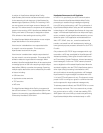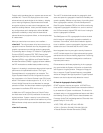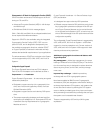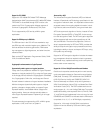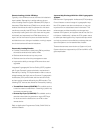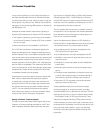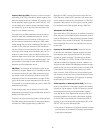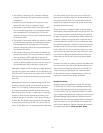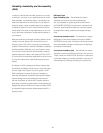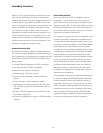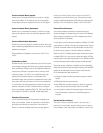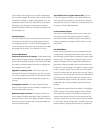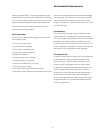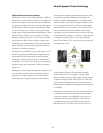• The quantity of temporary IFLs ordered is limited by
quantity of purchased IFLs (permanently active plus
unassigned).
• Temporary use of unassigned CP capacity or unas-
signed IFLs will not incur a hardware charge.
• The quantity of permanent zIIPs plus temporary zIIPs
can not exceed the quantity of purchased (permanent
plus unassigned) CPs plus temporary CPs and the
quantity of temporary zIIPs can not exceed the quantity
of permanent zIIPs.
• The quantity of permanent zAAPs plus temporary zAAPs
can not exceed the quantity of purchased (permanent
plus unassigned) CPs plus temporary CPs and the
quantity of temporary zAAPs can not exceed the quan-
tity of permanent zAAPs.
•
The quantity of temporary ICFs ordered is limited by the
quantity of permanent ICFs as long as the sum of perma-
nent and temporary ICFs is less than or equal to 16.
•
The quantity of temporary SAPs ordered is limited by the
quantity of permanent SAPs as long as the sum of perma-
nent and temporary SAPs is less than or equal to 32.
Although the System z10 E will allow up to eight temporary
records of any type to be installed, only one temporary On/
Off CoD record may be active at any given time. An On/Off
CoD record may be active while other temporary records
are active.
Management of temporary capacity through On/Off CoD
is further enhanced through the introduction of resource
tokens. For CP capacity, a resource token represents
an amount of processing capacity that will result in one
MSU of SW cost for one day – an MSU-day. For specialty
engines, a resource token represents activation of one
engine of that type for one day – an IFL-day, a zIIP-day or
a zAAP-day. The different resource tokens are contained
in separate pools within the On/Off CoD record. The cus-
tomer, via the Resource Link ordering process, determines
how many tokens go into each pool. Once On/Off CoD
resources are activated, tokens will be decremented from
their pools every 24 hours. The amount decremented is
based on the highest activation level for that engine type
during the previous 24 hours.
Resource tokens are intended to help customers bound
the hardware costs associated with using On/Off CoD. The
use of resource tokens is optional and they are available
on either a prepaid or post-paid basis. When prepaid, the
customer is billed for the total amount of resource tokens
contained within the On/Off CoD record. When post-paid,
the total billing against the On/Off Cod record is limited by
the total amount of resource tokens contained within the
record. Resource Link will provide the customer an order-
ing wizard to help determine how many tokens they need
to purchase for different activation scenarios. Resource
tokens within an On/Off CoD record may also be replen-
ished.
Resource Link offers an ordering wizard to help determine
how many tokens you need to purchase for different acti-
vation scenarios. Resource tokens within an On/Off CoD
record may also be replenished. For more information
on the use and ordering of resource tokens, refer to the
Capacity on Demand Users Guide, SC28-6871.
Capacity Provisioning
Hardware working with software is critical. The activation
of On/Off CoD on z10 EC can be simplifi ed or automated
by using z/OS Capacity Provisioning (available with z/OS
V1.10 and z/OS V1.9). This capability enables the monitor-
ing of multiple systems based on Capacity Provisioning and
Workload Manager (WLM) defi nitions. When the defi ned
conditions are met, z/OS can suggest capacity changes for
manual activation from a z/OS console or the system can
add or remove temporary capacity automatically and with-
out operator intervention. z10 EC can do IT better.
41



